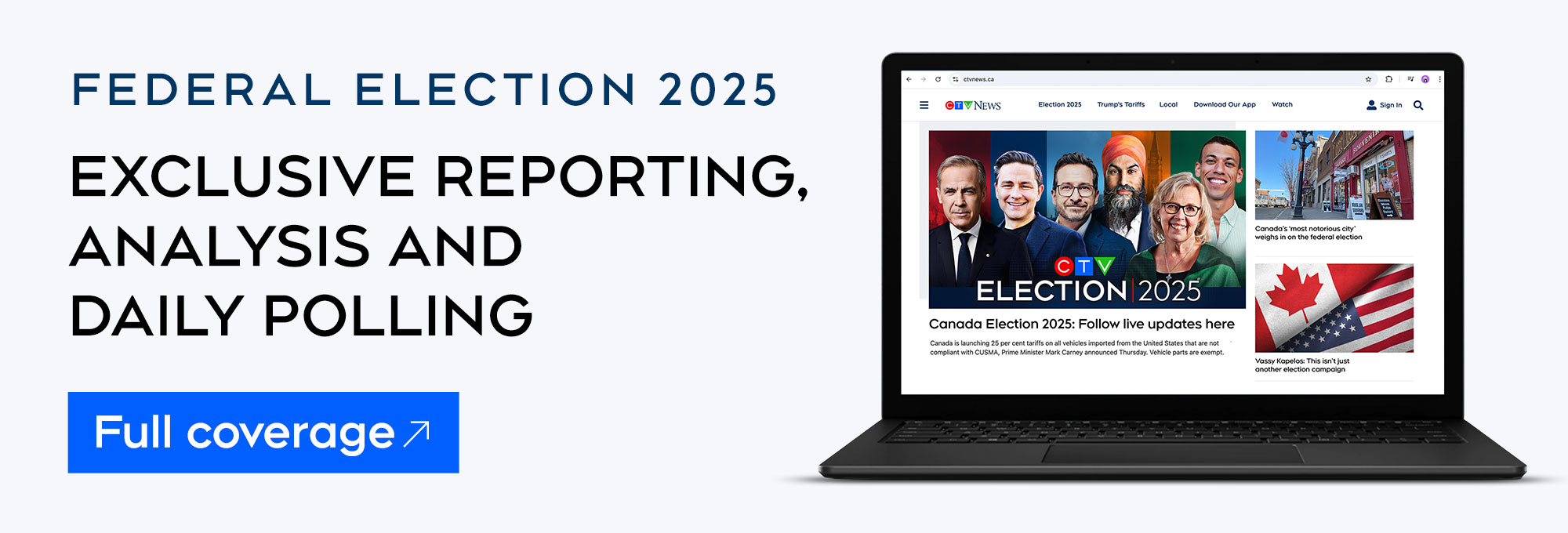The Canadian election is less than four weeks away and as local candidates begin to put up signs and piece together their pitch on policy and platform, a lot of issues are coming to mind.
Leaders are criss-crossing the country trying to convince voters to put an X for their candidates and voters have a lot on their minds when it comes to earning their vote.
But what are the most important issues to voters this time around? Well, one Nipissing University political science professor believes this campaign is centred around one person who is not even from this country: Donald Trump.

A change in Canada’s election landscape
“That’s kind of a new thing for our election landscape,” David Tabachnick told CTV News.

This, despite Trump toning down his 51st state and annexing Canada into the United States rhetoric lately.
Tabachnick said the current state of the economy and inflation follow right behind Trump’s tariffs, that’s because they’re directly linked to what levies the U.S. decides to impose on Canada.
Dealing with the U.S.
A new poll suggests more than one in five people planning to vote for the Liberals are being motivated by their belief that leader Mark Carney is the best option to deal with Trump.
But it suggests Conservative Leader Pierre Poilievre’s ability to stand up to Trump is motivating the vote of only a small number of people who said they’re voting for his party.

Conservative voters appear to be more motivated by anti-Liberal sentiment and a desire for change.
Carney, in his role as prime minister, announced that Canada would impose a 25 per cent tariff on non-Canada-U.S.-Mexico Agreement (CUSMA) compliant vehicles imported from the U.S. to counter Trump’s auto levies. The tariff will also apply to non-Canadian and non-Mexican content of CUSMA-compliant vehicles.
Poilievre promised to remove federal sales tax from Canadian-made vehicles and set up a fund to loan money to businesses impacted by the tariffs.
NDP leader Jagmeet Singh pledged a tax-free ‘Victory Bonds’ that would be available in five-year and 10-year terms and pay a compounding interest rate of 3.5 per cent.
Most will vote based on projected confidence
Tabachnick expects most Canadians will cast their ballot based on who they believe can best “project confidence” that they are best suited to lead the country in these rocky and uncertain times.
“We’re looking for somebody who can reassure us that they can take care of these matters and that they can negotiate and renegotiate,” he said.
Tabachnick expects voter turnout to be relatively high this time around when compared to recent federal elections. He likens it to the 1988 vote.
“This was when we were thinking about our first free trade agreement with the United States,” he said.
“That election saw a tremendously high voter turnout. In a kind of weird way, it’s the reverse of that now.”
Recent polls
The latest polling has the Liberals at a 10-point advantage over the Conservatives, while Carney has stretched to a 20-point lead over Poilievre when it comes to Canadians’ preferences for prime minister.
A three-day rolling sample by Nanos Research that ended Thursday has the Liberals at 46 per cent over the Conservatives at 36 per cent.
The New Democratic Party remains at nine per cent, followed by the Bloc Quebecois (5 per cent), Green Party of Canada (two per cent) and the People’s Party of Canada (one per cent).

With lots to say and a country to shape, voting for some can’t come sooner.
Election day is April 28.








